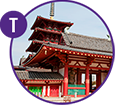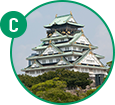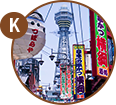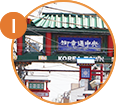
Eat a Jumbo Sushi Roll
Setsubun 2025: A Japanese Tradition
2025.01.31


Written by: キタちゃん(Kita chan)
● Setsubun: A Japanese Tradition in February
Setsubun is the most famous seasonal Japanese festival in February.
Setsubun celebrations are held one day before the start of spring each year according to the Japanese lunar calendar and that falls on February 2 this year. Literally meaning “seasonal division,” Setsubun is a juncture between winter and spring. On the day of Setsubun, events are held around the country to drive away evil spirits and invite fortune as a way to welcome spring.
Let’s talk about Setsubun and enjoy the celebrations!

● What’s Setsubun? Why We Throw Beans
The ritual of bean throwing—called mamemaki—appears in the records from as early as Muromachi Period, about 600 years ago. As winter comes to an end, mamemaki helps get rid of evil spirits that brought sickness during the cold season and bring fortune for spring. It is a ritual to wish for good health and happiness for all.
“Oni wa soto, fuku wa uchi!” (ogres out, fortunes in) is the mantra for mamemaki.
With horns and a terrifying appearance in typically red or blue, oni (ogre) is the symbol of evil in Japan since the ancient times. Needless to say, on Setsubun, everything evil is represented by oni. Fuku on the other hand represents fortune and good luck, happiness and hope.
In short, Setsubun is a ritual that wipes out the evil and brings happiness.

● The Bean Power
So how do beans drive oni away? The beans typically used in mamemaki are soybeans, which are the most essential ingredient in Japanese food. Eaten in various forms—tofu, miso, soy sauce, simmered beans, natto (fermented soybeans), kinako (soybean powder) to name a few—soybeans are full of nutrients and central to Japanese diet.
It is said the high nutritional value of soybeans makes it a vital force, a powerful weapon that can conquer even evil, like oni.

Another key is that the soybeans used in mamemaki are roasted as opposed to raw—we don’t want the beans to sprout and foster the evil, do we? In some regions, peanuts are used instead.
It is customary to eat the roasted soybeans at the end of mamemaki. Eat one soybean for each year of your life, and you will be blessed with good health!
● Eho-maki: A Tradition from Osaka?
Eho-maki, another Setsubun tradition, is said to bring good luck to those who eat it on Setsubun. It is a sushi roll, but what makes it special is how you eat it: you eat one whole roll—without slicing it into smaller pieces—in silence, making a wish, while facing the lucky direction (eho). While much is unknown about this tradition, the ritual of eating Eho-maki is said to have started in Osaka and it has become quite popular in recent years. This year’s eho is West-southwest. On the night of Setsubun this year, eat an Eho-maki facing West-southwest and have your wish come true!

● Say Goodbye to Evil Spirits at Abiko Kannon Temple
While Setsubun Obake held in Dojima is a festive and famous event in Osaka, many visit the Setsubun festival at Abiko Kannon Temple, Japan’s oldest prayer hall for Yakuyoke (warding off bad luck.) There’s no mamemaki here, though. Instead, Abiko Kannon’s solemn festival is focused around fire. At the Gomadaki prayer ritual, offerings are burned down to ashes for spiritual purification. Don’t forget to grab the yakuyoke manju buns sold in front of the temple gates while you’re there. You can ward off evil spirits by having a good friend eat this popular yakuyoke manju.

Click here for a related article, Keep the Demons Out of Osaka↓
https://metronine.osaka/en/article_tour/setsubun190128/
Spots Introduced
Abiko Kannon Temple
[Access] About 3 mins walk from Exit 2 at Abiko Station.
[Hours] Gates open at: 7am during the summer season (April – October) or 7:30am during the winter season (November – March) except for the 1st and 18th days of the month (opens at 5:30am on those days)
Gates close at: 5pm
Recommended Plans
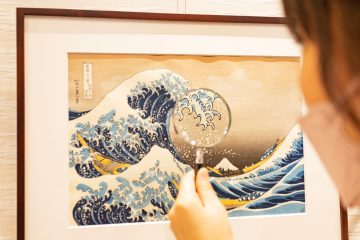
The World of Ukiyo-e:
Japonism that Captured the World
In 17th to 19th century Japan, after the turbulent and violent Warring States period ended, …
2025.06.27

An epic appearance of the Milky Way in Osaka!!
A guide to a magical night on Tanabata, July 7.
Tanabata, aka the Star Festival, is one of the traditional seasonal festivals of Japan, …
2025.06.13

A Must See Summer Festival in Osaka:
The Fantastical Tenjin Matsuri
with Mikoshi, Boats, and Fireworks
The Tenjin Matsuri (Tenjin Matsuri Festival) is one of the biggest festivals in …
2025.06.06
Abiko








